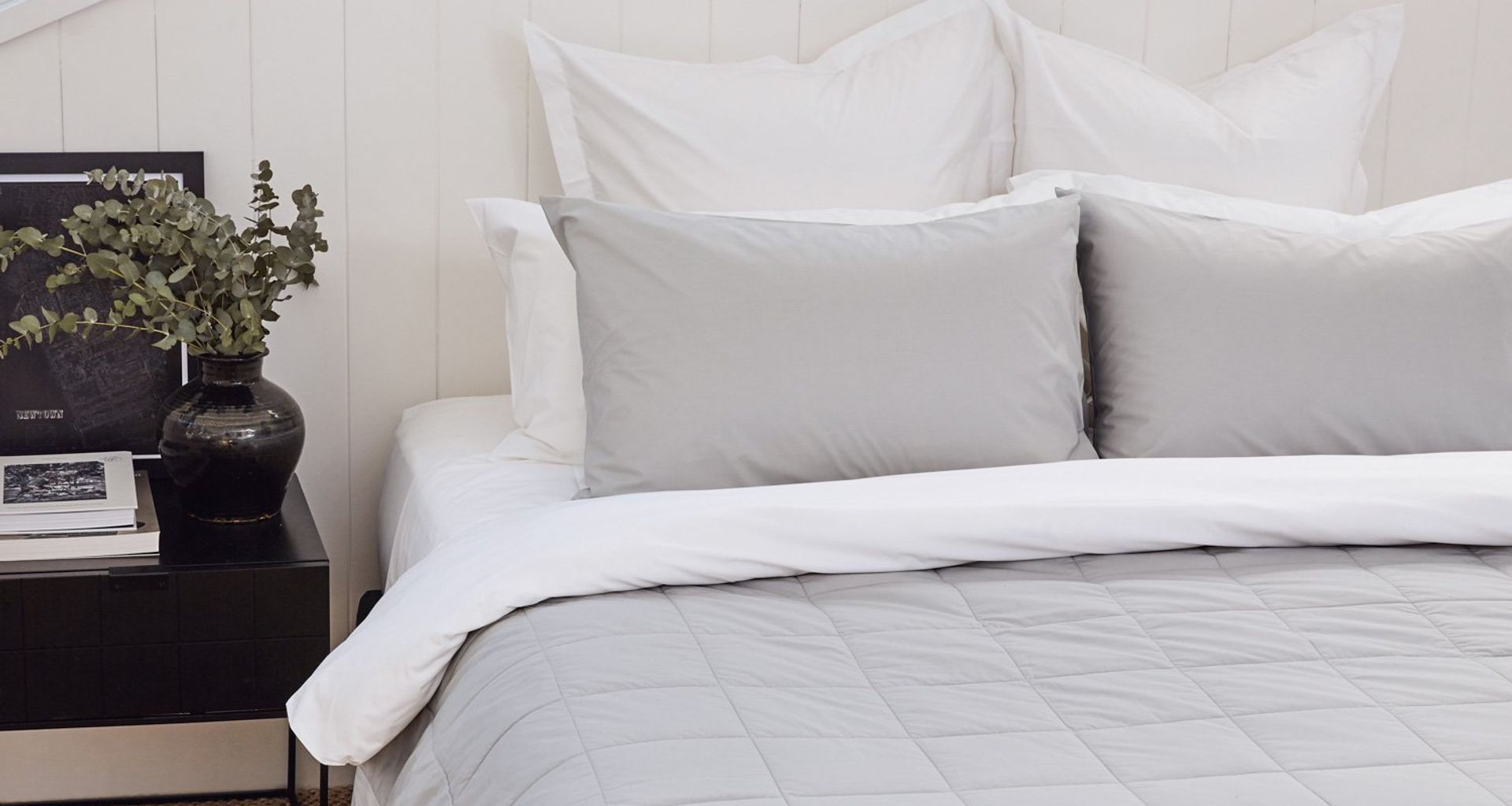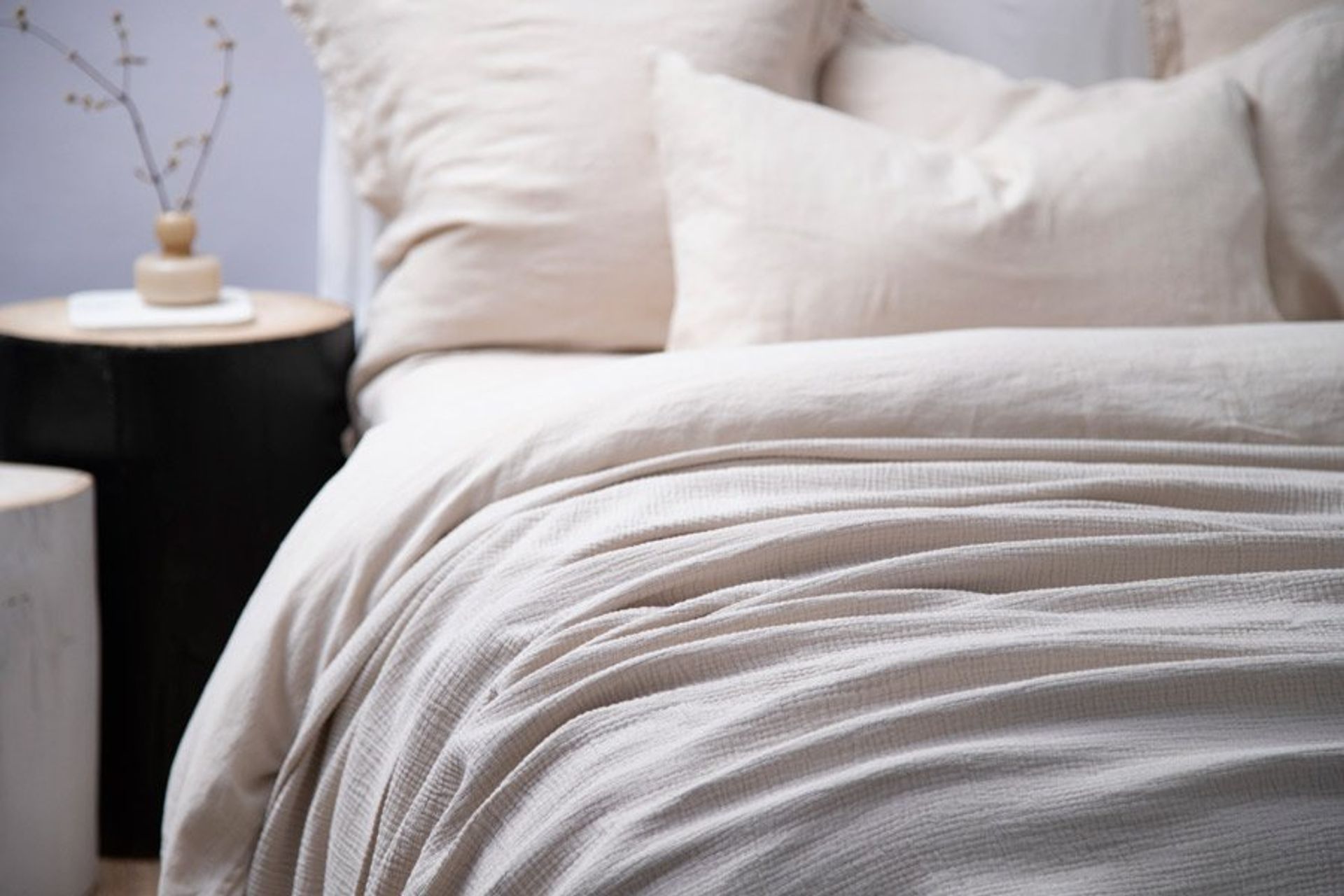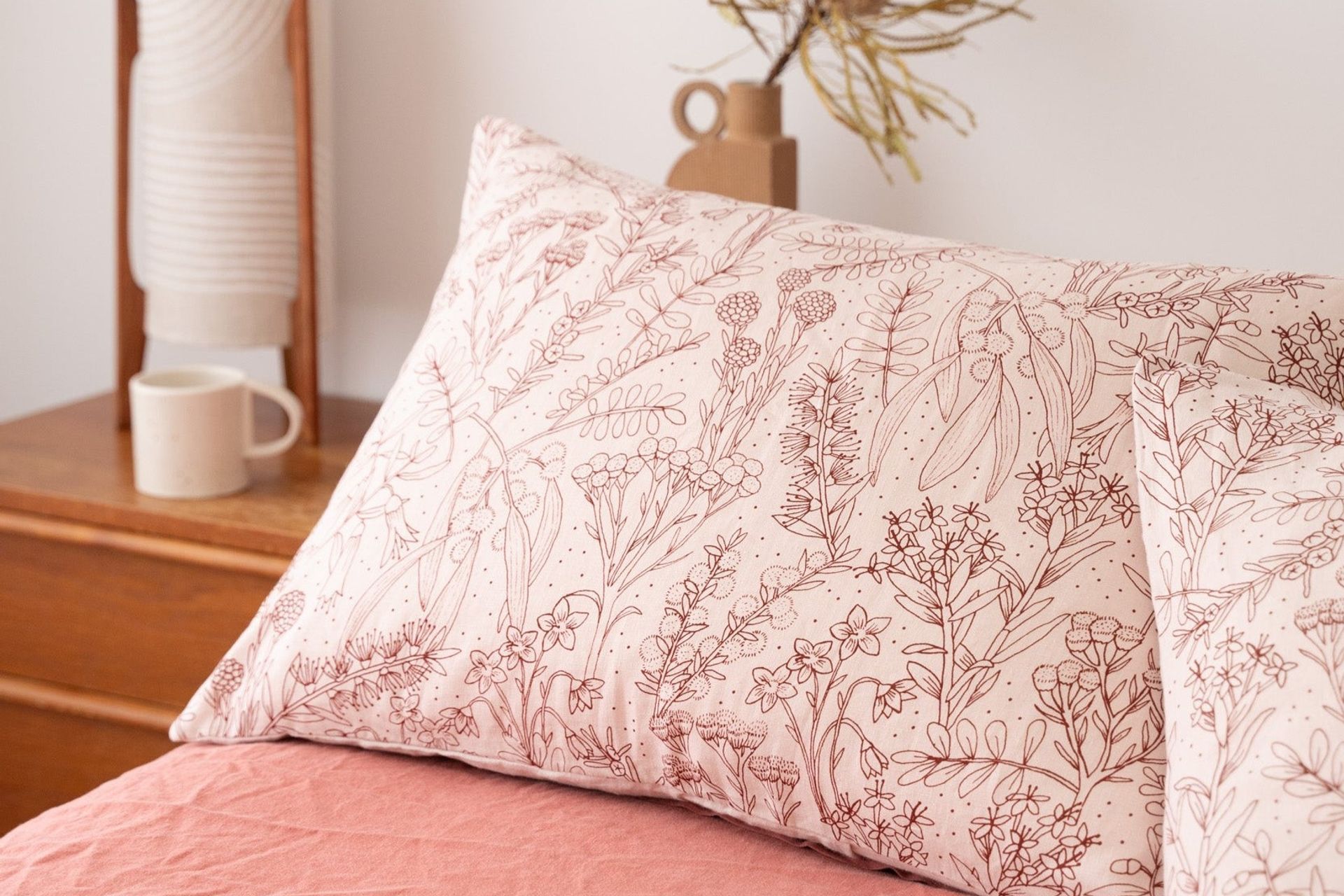How to choose a pillow that's perfect for you
Written by
10 April 2023
•
9 min read

For many people, choosing the right pillow is one of the most important decisions they’ll make for their everyday health and well-being. The value we place on high-quality sleep is ever-increasing, in part thanks to study after study that confirms its advantages and benefits. Like people, pillows are incredibly varied and diverse from one to another but there are steps you can follow to ensure you pick one that’s perfect for you.

1. Know your natural sleep position
One of the first things to do before choosing a pillow is to identify your natural sleeping position. Different types of pillows are better suited to some sleep positions than others and using this as your starting point will put you on the right path from the outset. Generally speaking, most of us fall into one of three sleep positions: back, side or stomach sleepers and each has its own recommendations.
Back sleepers
Back sleepers should ideally look for thinner pillows that won’t push their head and neck too far forward. Pillows that are too thick for back sleepers may force their heads into an uncomfortable position, leading to neck pain. For this reason, firmer pillows are also not ideal for those who sleep on their backs, with something softer preferred.

Side sleepers
For a side sleeper, it’s important to look for a thick pillow to fill the gap between the ear and shoulder. This is because side sleepers tend to put most of their weight on their hips and shoulders while their neck droops towards the mattress. A thick or contour pillow with a built-in curve is often best for side sleepers, as it helps keep your spine aligned and provides extra support where it’s most needed.
Stomach sleepers
Stomach sleepers should look for a pillow that’s very thin but supportive. The main issue for those who sleep in this position is that they often end up extending their neck too far. A flatter, softer pillow will make sure your head isn’t pushed too far up or down, which can cause neck and back pain. Pillows filled with very soft and flexible substances are good for stomach sleepers.

2. Understand the benefits of different pillow materials and fills
When it comes to pillow materials and pillow fills there are now more choices than there have ever been, each with its own qualities to consider. From traditional down pillows to latex and memory foam pillows — understanding the unique traits of each will again help narrow down your choices.
Feather pillows
Feather pillows are among the most popular and have been used for centuries. They’re made of either goose or duck feathers and provide a soft, gentle cushioning that moulds to the shape of your head and neck.
Down pillows
A down pillow is made of the soft undercoat of ducks and geese. They offer slightly firmer support than feather-filled pillows and are lightweight and breathable, making them ideal for those who sleep hot.

Latex pillows
A latex pillow offers a great balance of comfort and support and is also known for its durability and resilience. They’re also hypoallergenic and resistant to dust mites making them popular with allergy sufferers.
Memory foam pillows
A memory foam pillow is made of polyurethane, which is designed to conform to the body as you lie on it and help maintain spinal alignment. It can take a few nights to get used to a memory foam pillow as it can feel quite firm but once you do, it can be incredibly comfortable.
Microfibre pillows
Microfibre pillows are filled with synthetic materials made from very fine fibres that offer slightly more support than down or feathers. As a type of synthetic pillow, they are also hypoallergenic and incredibly resistant to wear and tear. Most can be machine-washed and dried and still retain their shape.
Buckwheat pillows
A buckwheat pillow is filled with hulls of buckwheat seeds and is a unique option to consider. They don't compress easily for a firm feel, giving good support to the head, neck and shoulders. They provide good air circulation, regulate heat well and are also considered environmentally friendly, as a renewable resource and can be composted when the pillow is no longer usable.
3. Think about the support you'll need and the firmness preferred
As you've already seen, pillow firmness is important with respect to sleep position, but it doesn't stop there. Pillow firmness is greatly influenced by one's personal preference as well which needs to be balanced along with your natural sleep position.
Soft pillows
A soft pillow will provide more cushioning and comfort, allowing your head to sink in slightly. They are usually preferred by stomach sleepers and those who don't like pillows that are too thick. They provide the least amount of support but are very plush and soothing.
Medium-soft pillows
Medium-soft pillows offer a more supportive feel but still provide some cushioning. They are perfect for side sleepers and those who like to move around in their sleep and need a pillow to keep up with them.

Medium-firm pillows
Medium-firm pillows provide a good balance of support and comfort. They are usually preferred by back sleepers, as they keep the spine aligned without feeling too hard or uncomfortable.
Firm pillows
Firm pillows provide the most support and are typically preferred by back and side sleepers, maintaining excellent alignment of the head, neck and spine. A firmer pillow can also help keep one's airway open making them a good choice for people who snore or suffer from sleep apnoea.
Related article: Thread count guide: What is the best thread count for bed sheets?
4. Choose a pillow size and shape that suits your bed and body size
Pillows come in a variety of sizes - from standard to queen and king. These are good guides to go by with respect to the size of the mattress and bed you sleep on, helping you maintain a balanced aesthetic in the room. However, it's also important to choose the right pillow for your body size. The height of the pillow should be roughly equal to the distance between your shoulder and head. This will ensure adequate support while still allowing you to move freely during sleep. The width of your pillow should be equal to the width of your shoulders or slightly wider to reduce the chance of your falling off your pillow during the night.
When it comes to pillow shape, rectangular pillows are the most common and provide support for your entire body including the head, neck and shoulders. However, you may come across other shapes such as contour pillows, which offer additional comfort by providing a more ergonomic fit that follows the shape of your body.
5. Be aware of ongoing maintenance and expected lifespan
While comfort is extremely important when it comes to knowing how to choose a pillow, there are also other aspects to consider before making your final decision. One of these is the amount of maintenance required to keep it fresh and clean and as close to its original condition as possible. For example, feather and down pillows should be fluffed and aired out regularly and can usually be washed in a machine every three to six months. Memory foam and latex pillows generally don't need to be washed but may need to be replaced every few years due to wear and tear. Microfibre pillows, on the other hand, can usually be washed in a machine once a month or so and can last even longer. Some also need to be washed and cleaned in particular ways either by hand or specific wash cycles. Again, it's important to check the manufacturing instructions and labels before purchasing to get an idea of how involved the upkeep is going to be before committing to it. You'll also have a clearer expectation about when you'll need to replace your pillow from the very start.

6. Set a budget and stick to it
Pillows are as broad in price range as they are in type and style. The cost of pillows in Australia will depend on the brand, quality, material, and size. On average, basic pillows in Australia can cost between $10 to $50 with higher-end pillows costing up to $100 or more. Special types of pillows, like memory foam pillows, can cost between $50 to $150 while down pillows can range from $40 to over $300 or more for a luxurious choice. With these estimates in mind, you'll hopefully be able to come up with a figure you're happy to part with while giving yourself a bit of leeway to accommodate your preferences. Giving yourself a budget like this will also help you narrow down your options, making your search much faster and more efficient.
Related article: What are the true hallmarks of luxury bedding?

Comfort is key to finding a pillow that works for you
At the end of the day, comfort is key when it comes to successfully knowing how to choose a pillow. Most of the recommendations directly relate to comfort which should be the central point that all your decisions revolve around. It's also important to acknowledge that there's no such thing as the ‘perfect' pillow for everyone and what works for one person may not work for another. However, by taking into consideration your sleeping position, materials, the type of pillow as well as any ongoing maintenance requirements and budget, you can be sure to find a new pillow that's a great buy and provides a comfortable night's sleep.
This article was updated on 22th, November 2024
Browse ArchiPro’s entire collection of high-quality pillows and cases